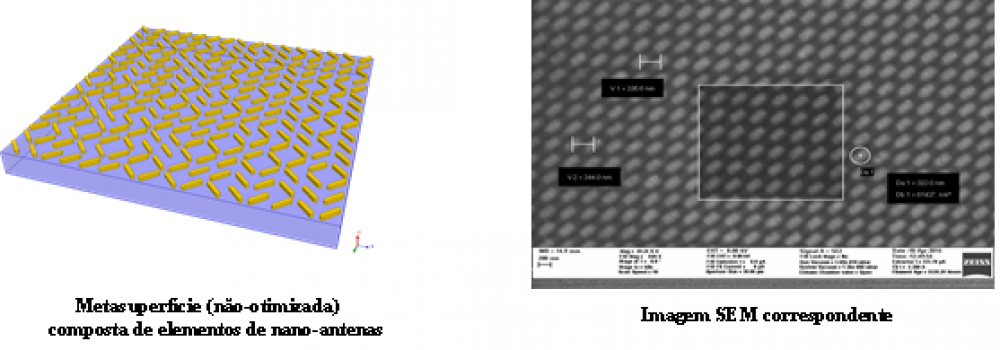The term “metamaterial” was coined to denote a wide range of complex composite materials that exhibit electromagnetic properties not observed in their individual constituents and also not found in natural materials. Many metamaterials are designed to have heterogeneities on a scale less than the characteristic lengths of the excitation field (eg wavelength, penetration depth, diffusion length). Heterogeneities are purposely introduced in order to confine excitations, thus selectively creating “states” that are not found in the original constituent materials.
Plasmonic metamaterials exploit the phenomenon of surface plasmon-polariton waves (SPP) which correspond to the coupling between an electromagnetic wave and the charge density of electrons at the interface between a metal and a dielectric or between metallic particles. Recent advances in nanofabrication techniques have enabled the rapid evolution of this concept, and these devices are certainly helping to pave the way for miniaturization of structures at an unprecedented scale, thus enabling the integration of plasmonic devices at the same scale level as CMOS devices.
A particularly interesting type of plasmonic device are nano-antennas, which combine the concept of SPP waves with antenna design rules at the nanometer scale. These antennas can be designed to operate in the visible or infrared region of the electromagnetic spectrum, and are very interesting for diffractive optics applications creating the so-called “metasurface”, which is very attractive for holographic applications. An example of such a structure can be seen in the figure below.

The main projects currently developed in this area are:
- Metamateriais planares (meios hiperbólicos) para aplicações em átomos frios
- Óptica difrativa, incluindo hologramas de fase binária, filtragem óptica, interconexão óptica, etc.
- Metamateriais plasmônicos para aplicação em sensoriamento
- Integration of plasmonic metamaterials and microelectronic devices for lab-on-a-chip applications.
Team
Prof. Dr. Ben-Hur Viana Borges
Prof. Dr. João Paulo Carmo
Prof. Dr. John Weiner
Prof. Dr. Luiz Neto
Prof. Dr. Emiliano Martins
Prof. Dr. João Navarro
Prof. Dr. Euclydes Marega Junior
Achiles Mota (Doutorando)
Mateus Marques (Doutorando)
Talita Conte (Mestrando)
Francisco Ferraz Neves (Iniciação Científica)
João Corsini (Iniciação Científica)
Guilherme Cabral (Iniciação Científica)
